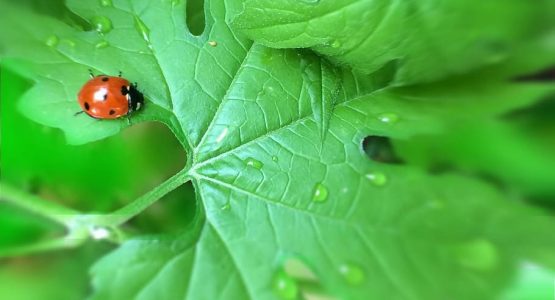How to Protect Your Plants From Insects

In this blog about how to protect your plants from Insects we look at the best way of protecting you plants problems caused by insects.
When it comes to gardening, there’s nothing more annoying than spending time curating and pruning the perfect space, only for it to be overrun by insects. A greenhouse is a great garden addition, allowing you to easily tend to plants and crops in all weather. However, from gnats to aphids, mites to whiteflies, they are also the perfect breeding ground for pest development. Due to the close proximity of plants and their warm, humid temperatures, greenhouse insect control is crucial to maintain healthy, thriving plants.
Where, outside, nature helps to keep insects under control, greenhouses offer the perfect environment for rapidly developing pest problems. While it’s impossible to guarantee a pest-free zone, there are several strategies gardeners can use to prevent plant loss and understand how to keep bugs out of a greenhouse.
Carefully Inspect Plants
Whether you’ve purchased your plant from a garden centre, moved it from your back garden or inherited it from a friend, chances are greenhouse pests will already be present. To prevent the accidental introduction of pests into the greenhouse, it’s important to carefully check every plant you introduce into your greenhouse for any insects. From changes in leaf texture or colour to webbing and fluff appearing on your plants, greenhouse bug infestation should be quite obvious. Spraying plants with insecticidal soaps, wiping leaves with a damp sponge or using a soft brush, there are many ways you can remove pests before they cause serious issues.
Monitor, monitor, monitor
Like anything, you can’t expect your greenhouse to thrive by leaving it to its own devices. Detecting any pest infestations early means you’ll be much better prepared before things get out of hand. Simply conducting a weekly inspection of your greenhouse can go a huge way towards keeping pest situations at bay. When monitoring, be sure to check a range of plants, as different species are attracted to specific plants. For greenhouse insect control, best practices advise checking at least 1% of the plants in your greenhouse each time.
Sticky yellow traps
Sticky yellow insect traps are valuable tools for gardeners and homeowners in managing pest infestations. These traps consist of yellow, adhesive-coated surfaces that attract a wide range of flying insects. Here are some key points about these traps:
- Attractiveness: The bright yellow colour of these traps mimics the appearance of flowers to flying insects, particularly aphids, whiteflies, thrips, and fungus gnats. The sticky coating on the surface traps them upon contact.
- Easy to Use: Sticky yellow traps are incredibly simple to set up. They can be hung on stakes, branches, or placed near susceptible plants. They don’t require any pesticides or chemicals, making them an eco-friendly option.
- Monitoring and Control: These traps are not only useful for monitoring the presence of pests but also for reducing their populations. By capturing adult insects, they can prevent them from laying eggs and reproducing.
- Safe for Beneficial Insects: One of the advantages of sticky traps is that they are non-toxic and safe for beneficial insects like bees and ladybugs, which are essential for pollination and natural pest control.
- Regular Replacement: Over time, the traps can become covered with insects and lose their stickiness. It’s important to replace them periodically to ensure their effectiveness.
Pheromone traps are ingenious tools used in insect pest management that leverage the power of chemical communication to monitor and control populations. Here’s an overview of these traps:
How Pheromone Traps Work
- Pheromones: Insects communicate through chemical signals called pheromones. These signals can convey information about mating, territory, or food sources. Pheromone traps use synthetic versions of these chemical signals to attract and manipulate insect behavior.
- Attractant Lures: Pheromone traps contain attractant lures that release specific pheromones mimicking those emitted by female insects. These lures draw male insects, confusing them and disrupting their mating patterns.
- Monitoring: Pheromone traps are excellent for monitoring insect populations. By checking the traps regularly, growers can detect the presence and density of specific pests, helping them make informed decisions about pest control strategies.
- Mass Trapping: In addition to monitoring, pheromone traps can be used for mass trapping. When deployed strategically, these traps can capture enough male insects to significantly reduce mating success, ultimately decreasing pest populations.
- Reduced Pesticide Use: Pheromone traps offer an eco-friendly alternative to chemical pesticides. They can help minimize the need for broad-spectrum insecticides, which can harm non-target organisms and impact the environment.
- Crop Protection: Pheromone traps are commonly used in agricultural settings to protect crops from destructive pests like moths, beetles, and weevils.
While pheromone traps are highly effective, they require proper placement, regular monitoring, and timely maintenance. Different pests require specific pheromone formulations, so tailoring the traps to the targeted insects is essential for success. Overall, pheromone traps exemplify the use of science and nature to manage insect populations more sustainably and effectively.
Pheromone Traps
Pheromone traps are ingenious tools used to protect your plants from insects, that leverage the power of chemical communication to monitor and control populations. Here’s an overview of these traps:
How Pheromone Traps Work:
- Pheromones: Insects communicate through chemical signals called pheromones. These signals can convey information about mating, territory, or food sources. Pheromone traps use synthetic versions of these chemical signals to attract and manipulate insect behavior.
- Attractant Lures: Pheromone traps contain attractant lures that release specific pheromones mimicking those emitted by female insects. These lures draw male insects, confusing them and disrupting their mating patterns.
- Monitoring: Pheromone traps are excellent for monitoring insect populations. By checking the traps regularly, growers can detect the presence and density of specific pests, helping them make informed decisions about pest control strategies.
- Mass Trapping: In addition to monitoring, pheromone traps can be used for mass trapping. When deployed strategically, these traps can capture enough male insects to significantly reduce mating success, ultimately decreasing pest populations.
- Reduced Pesticide Use: Pheromone traps offer an eco-friendly alternative to chemical pesticides. They can help minimize the need for broad-spectrum insecticides, which can harm non-target organisms and impact the environment.
- Crop Protection: Pheromone traps are commonly used in agricultural settings to protect crops from destructive pests like moths, beetles, and weevils.
While pheromone traps are highly effective, they require proper placement, regular monitoring, and timely maintenance. Different pests require specific pheromone formulations, so tailoring the traps to the targeted insects is essential for success. Overall, pheromone traps exemplify the use of science and nature to manage insect populations more sustainably and effectively.
Screens to protect you plants from insects
While pests are generally brought into the greenhouse on plant material, others can enter through ventilators or gaps in the greenhouse structure. That’s why it’s crucial to ensure you’re taking the right measures so that your plants are properly protected. Specialist insect screening is ideal for keeping out common insects while also preventing beneficial bugs from escaping. However, be mindful of the fact that the gaps in insect screens are tiny and so maintaining proper airflow is essential. To compensate, it’s a good idea to widen vent gaps to allow air to flow more freely.
Keep things clean and tidy
Another thing you can do to protect your plants from insects is to keep everything clean and and tidy. It seems obvious, but it’s important to keep your greenhouse space clean and tidy to prevent the spreading of pests or diseases. Not only should you make sure you’re using clean or sterile soils, but it’s also crucial to keep tools and other equipment clean and sterilised to avoid greenhouse bug infestation.
It’s also a good idea, after each season, to conduct a thorough cleaning of the greenhouse itself. Traces of mildew, algae and general dirt can easily accumulate on the glass in greenhouses, and as plants need as much sunlight as possible to grow, it’s a good idea to regularly scrub down surfaces and remove any build-up.
Keep the surrounding area tidy
Maintaining a clean, mowed area around your greenhouse can help to reduce the number of pests you may find inside. Essentially, you’ll want to create an environment that is unfavourable to pests. Removing any weeds and keeping the area clean and tidy can go a long way towards reducing the number of pests that are introduced to your greenhouse.
While pests will always cause issues, the best solution is to prevent infestation, as once they’re inside, it’s much harder to get rid of them. By arming yourself with these helpful tips, you should be able to effectively and quickly know how to keep bugs out of a greenhouse and be able to deal with any issues before they become a problem.
In conclusion, our blog on how to protect your plants from Insects has looked at a number of methods to protect you precious plants.
